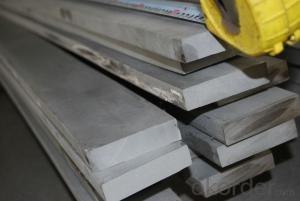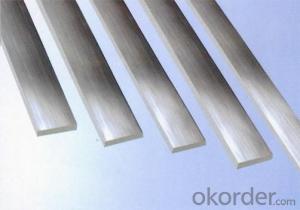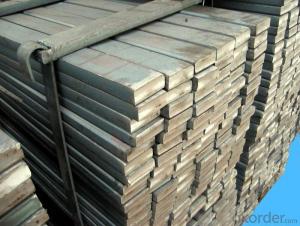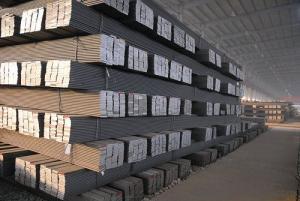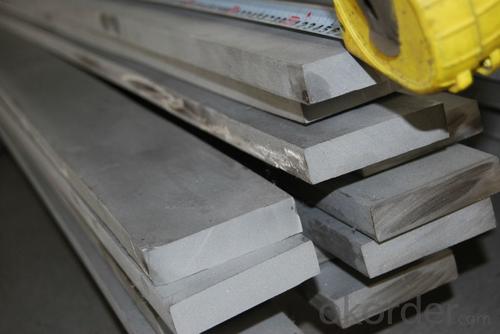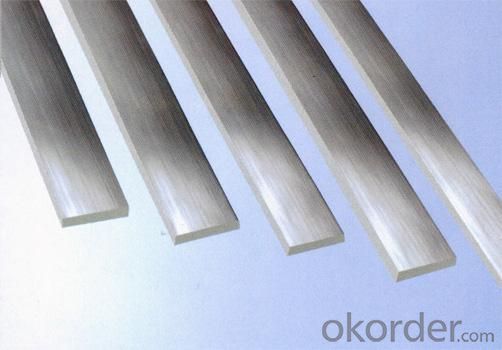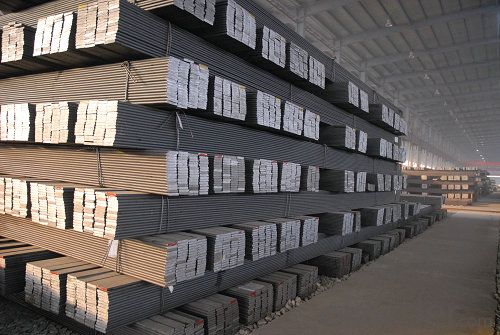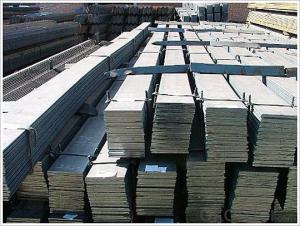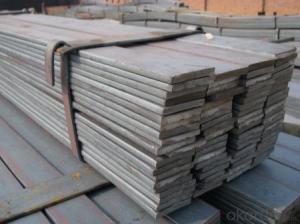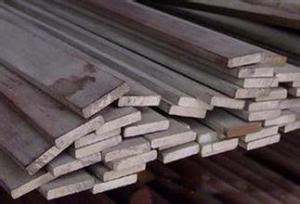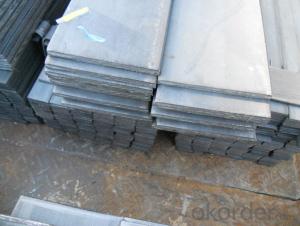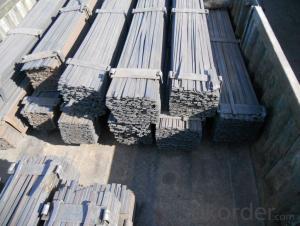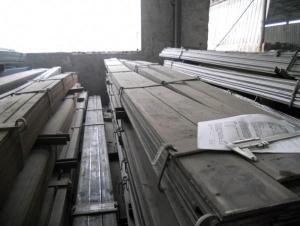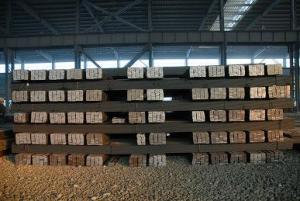Hot rolled steel flat bar for construction
- Loading Port:
- Tianjin
- Payment Terms:
- TT OR LC
- Min Order Qty:
- 10000 m.t.
- Supply Capability:
- 100000 m.t./month
OKorder Service Pledge
OKorder Financial Service
You Might Also Like
Specification
Product Description:
OKorder is offering hot rolled steel flat bar for construction at great prices with worldwide shipping. Our supplier is a world-class manufacturer of steel, with our products utilized the world over. OKorder annually supplies products to European, North American and Asian markets. We provide quotations within 24 hours of receiving an inquiry and guarantee competitive prices.
Product Applications:
Hot rolled steel flat bar are ideal for structural applications and are widely used in the construction of buildings and bridges, and the manufacturing, petrochemical, and transportation industries.
Product Advantages:
OKorder's Steel flat bar are durable, strong, and resist corrosion.
Main Product Features:
· Premium quality
· Prompt delivery & seaworthy packing (30 days after receiving deposit)
· Corrosion resistance
· Can be recycled and reused
· Mill test certification
· Professional Service
· Competitive pricing
Product Specifications:
Commodity: Carbon Steel Flat Bar
Standard: GB, JIS, ASTM,
Material: Q235, SS400 or Equivalent
Origin place: China
Thickness: 3mm-30mm
Width:20mm-200mm
Length: Max 12m
Certification: SGS/BV
Chemical composition
Alloy No | Grade | Element(%) | ||||
C | Mn | S | P | Si | ||
Q235 | B | 0.12—0.20 | 0.3—0.7 | ≤0.045 | ≤0.045 | ≤0.3 |
Physical properties
Alloy No | Grade | Yielding strength point(Mpa) | Tensile strength (Mpa) | Elongation after fracture(%) | ||||||
Thickness (mm) | Thickness (mm) | |||||||||
≤16 | >16--40 | >40--60 | >60--100 | ≤16 | >16--40 | >40--60 | >60--100 | |||
≥ | ≥ | |||||||||
Q235 | B | 235 | 225 | 215 | 205 | 375--500 | 26 | 25 | 24 | 23 |
Usage/Applications of Flat Bar
Widely used for construction;
Machinery manufacturing;
Iron tower steel structure;
Shipbuilding; Steel grating;
Staircase;
Bridge;
Viaduct;
Railway spare parts;
Boilers making etc.
Packaging & Delivery
Packaging Details: The Steel Flat Bars are packed in bundles and loaded in 20 feet/40 feet container, or shipped by bulk cargo ,also we can do as customer's requirements.
Delivery Details:30~45 days upon the receipt of buyer payment by T.T. or L/C.
Production Flow
The Carbon Steel Flat Bar is made through three processes:
1.Feeding the material: Feeding the row material (the steel plate) to Slitting Line.
2.Slitting:The steel plate would be slitted into expected width by lengthways cutter.
3. Leveled and cutting: The plat bar would be ground into level by the grinder and then cut into required length.
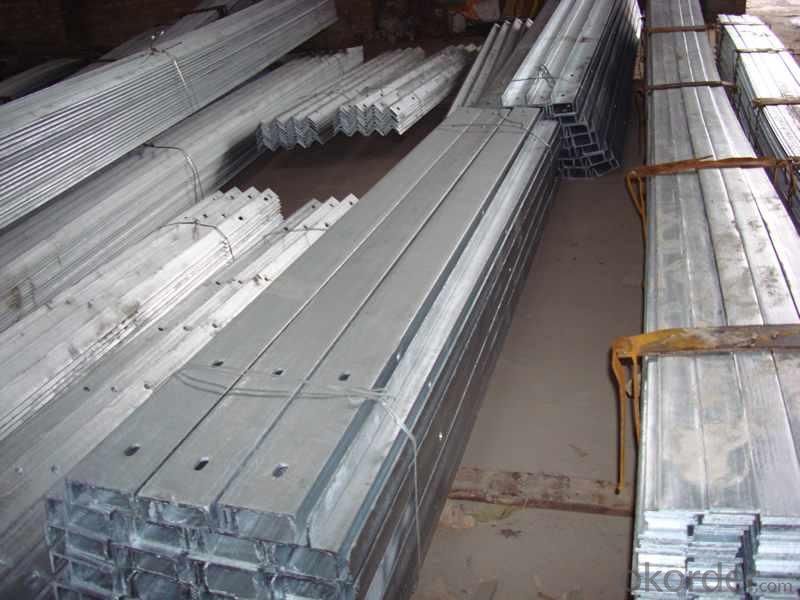
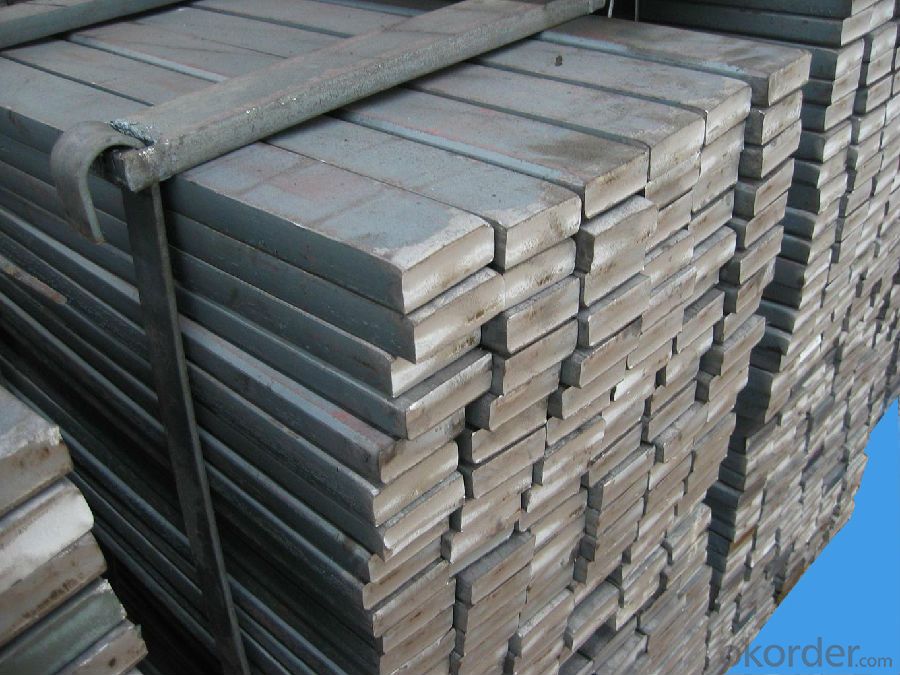
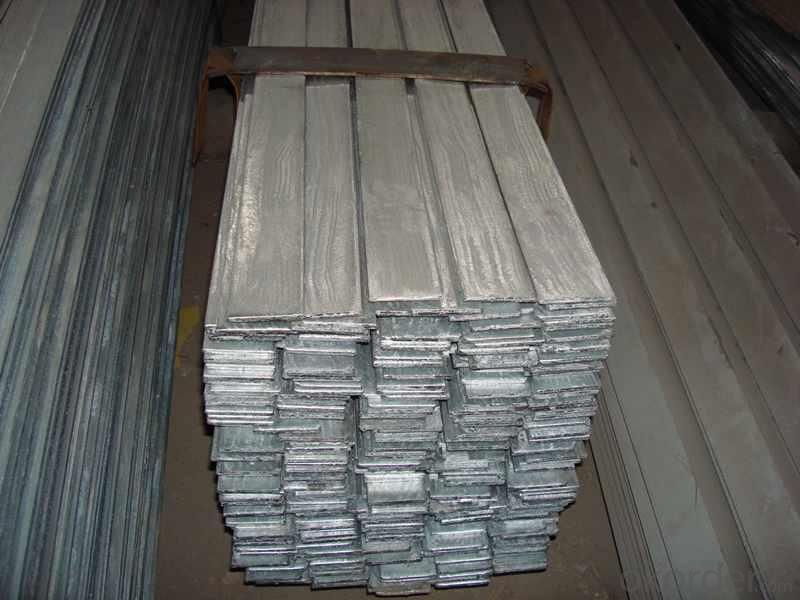
FAQ:
Q1: How do we guarantee the quality of our products?
A1: We have established an advanced quality management system which conducts strict quality tests at every step, from raw materials to the final product. At the same time, we provide extensive follow-up service assurances as required.
Q2: How soon can we receive the product after purchase?
A2: Within three days of placing an order, we will begin production. The specific shipping date is dependent upon international and government factors, but is typically 7 to 10 workdays.
- Q: How can copper clad steel ground electrode and galvanized flat steel be welded?
- If you want it to work well, use heat release welding, and if you take into account the cost budget, there are connectors, connectors that are just mechanical connections
- Q: Are steel flat bars suitable for fabrication of brackets or supports?
- Absolutely, steel flat bars are indeed appropriate for fabricating brackets or supports. Renowned for their strength, durability, and versatility, steel flat bars are an outstanding choice for numerous applications, including the construction of brackets and supports. The flat shape of steel bars facilitates effortless fabrication and manipulation, simplifying the creation of brackets or supports in diverse shapes and sizes. Moreover, steel boasts high resistance to deformation, ensuring that the brackets or supports will remain robust and dependable over time. Furthermore, steel flat bars possess exceptional load-bearing capabilities, rendering them suitable for supporting heavy loads or providing structural stability. This is particularly crucial in scenarios where brackets or supports must withstand substantial pressure or weight. Additionally, steel flat bars can be effortlessly welded, bolted, or securely attached to other structures, guaranteeing a reliable and steadfast connection. This permits the fabrication of brackets or supports that can be seamlessly integrated into existing frameworks or structures. To sum up, steel flat bars are an appropriate and favored choice for fabricating brackets or supports due to their strength, durability, versatility, and ease of fabrication. Whether for industrial, commercial, or residential applications, steel flat bars offer a dependable and long-lasting solution for diverse bracket or support requirements.
- Q: Can steel flat bars be used for making molds or dies?
- Yes, steel flat bars can be used for making molds or dies. Steel flat bars have excellent strength and durability, making them suitable for creating molds or dies used in various industrial applications.
- Q: How do steel flat bars contribute to the overall durability of commercial structures?
- The overall durability of commercial structures is enhanced by steel flat bars in various ways. To begin with, steel is renowned for its strength and durability, making it an ideal construction material. Steel flat bars possess a high tensile strength, enabling them to bear heavy loads and resist bending or warping when under pressure. This strength ensures that commercial structures can support the weight of different components, such as floors, walls, and roofs, thereby guaranteeing their stability over time. Furthermore, steel flat bars exhibit resistance to corrosion, which is particularly important in commercial structures exposed to moisture and harsh weather conditions. Unlike materials like wood or concrete, steel does not rot or deteriorate when exposed to water or moisture. This resistance to corrosion helps prevent structural damage, ensuring the longevity and safety of the commercial building. Moreover, steel flat bars are extremely versatile and can be customized to meet specific design requirements. They can be easily cut, drilled, and welded, allowing for flexibility in the creation of complex and intricate structures. This adaptability in design ensures that commercial structures can be constructed efficiently and with precision, resulting in a more durable and reliable building. Another significant aspect is the fire resistance of steel flat bars. Steel is inherently non-combustible, meaning it does not contribute to the spread or intensity of fires. This fire-resistant quality makes steel flat bars a preferred material for commercial structures, as it enhances the safety of occupants and minimizes the potential for structural damage in the event of a fire. Finally, steel flat bars are frequently employed in reinforcement applications. They can be embedded within concrete structures, such as beams or columns, to enhance their load-bearing capacity. This reinforcement adds an additional layer of strength and durability to the commercial building, ensuring its ability to withstand heavy loads and potential impacts. In conclusion, steel flat bars play a crucial role in enhancing the overall durability of commercial structures through their high strength, corrosion resistance, versatility in design, fire resistance, and reinforcement capabilities. Their integration in construction ensures the longevity, safety, and stability of commercial buildings, making them an indispensable component in the construction industry.
- Q: How do you determine the maximum load capacity of a steel flat bar?
- To determine the maximum load capacity of a steel flat bar, there are several factors that need to be considered. Firstly, the material properties of the steel, such as its yield strength and tensile strength, play a crucial role in determining the load capacity. These properties can usually be found in engineering handbooks or from the manufacturer's specifications. The yield strength is the maximum stress that the steel can withstand before it starts to deform permanently, while the tensile strength is the maximum stress it can handle before breaking. Secondly, the dimensions of the flat bar are important. The width, thickness, and length of the bar all contribute to its load-carrying capacity. A wider and thicker bar will generally have a higher load capacity compared to a narrower and thinner one. The length of the bar also affects its load-bearing ability, as longer bars tend to be more prone to bending and sagging under load. Another factor to consider is the type of loading the flat bar will be subjected to. Different types of loads, such as evenly distributed loads or point loads, will have different effects on the bar's capacity. The supported ends of the bar also play a role, as different support conditions, such as simply supported or fixed ends, will affect its load-bearing ability. To determine the maximum load capacity, engineers often use mathematical equations, such as the Euler-Bernoulli beam theory or the yield strength formula, which take into account the material properties, dimensions, and loading conditions. These equations can help calculate the maximum load that the steel flat bar can safely withstand without failure. It is important to note that these calculations are based on theoretical assumptions and simplifications, and real-world applications may have additional factors to consider, such as safety factors, environmental conditions, and dynamic loading. Therefore, it is always recommended to consult with a qualified engineer or structural analyst to ensure accurate determination of the maximum load capacity for a specific steel flat bar application.
- Q: What are the different methods of surface coating for steel flat bars?
- There are several methods of surface coating for steel flat bars, including hot-dip galvanizing, electroplating, powder coating, and painting.
- Q: Are steel flat bars available in different finishes?
- Yes, steel flat bars are available in different finishes. Common finishes include hot rolled, cold rolled, galvanized, and polished.
- Q: Are steel flat bars available in different grades of corrosion resistance?
- Different grades of corrosion resistance are available for steel flat bars. Steel, which is an alloy, can be modified with various elements to enhance its resistance to corrosion. Common types of corrosion-resistant steel flat bars include stainless steel, weathering steel, and galvanized steel. Stainless steel flat bars are highly resistant to corrosion due to the presence of chromium. They come in various grades, such as 304 and 316, each with different levels of corrosion resistance. These grades are often used in environments where exposure to moisture, chemicals, or high temperatures is common, such as in marine applications, food processing industries, or architectural structures. Another type of corrosion-resistant steel flat bar is weathering steel, also known as corten steel. It develops a protective layer of rust on its surface, which acts as a barrier against further corrosion. Weathering steel is commonly used in outdoor structures and architectural applications, as it provides a rustic and aesthetically pleasing appearance while offering excellent durability and resistance to atmospheric corrosion. Galvanized steel flat bars are created by coating regular steel with a layer of zinc, which acts as a sacrificial barrier against corrosion. This type of steel is widely used in construction, fencing, and other applications where exposure to moisture and corrosive environments is a concern. To summarize, steel flat bars come in different corrosion resistance grades, including stainless steel, weathering steel, and galvanized steel. The grade chosen depends on the specific requirements of the application and the level of corrosion resistance needed.
- Q: Are steel flat bars suitable for architectural applications?
- Yes, steel flat bars are suitable for architectural applications. They offer excellent strength, durability, and versatility, making them ideal for various architectural designs. Additionally, steel flat bars can be easily customized and fabricated to meet specific architectural requirements, making them a popular choice among architects and designers.
- Q: Are steel flat bars suitable for the construction of bridges or flyovers?
- Yes, steel flat bars are suitable for the construction of bridges or flyovers. Steel flat bars offer high strength and durability, making them ideal for supporting heavy loads and withstanding the stresses imposed by vehicular traffic. Additionally, they can be easily fabricated and joined, allowing for efficient construction of bridge structures.
Send your message to us
Hot rolled steel flat bar for construction
- Loading Port:
- Tianjin
- Payment Terms:
- TT OR LC
- Min Order Qty:
- 10000 m.t.
- Supply Capability:
- 100000 m.t./month
OKorder Service Pledge
OKorder Financial Service
Similar products
Hot products
Hot Searches
Related keywords
